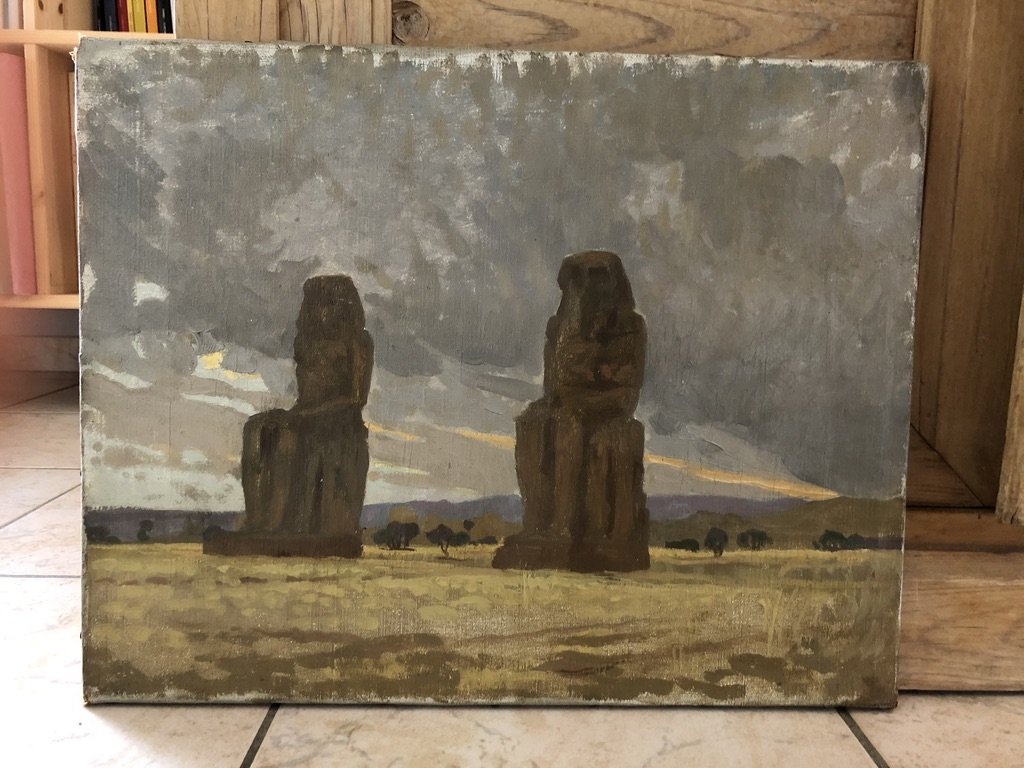"Henri Rapin (attr. To) (1873-1939), The Colossi Of Memnon, Landscape Of Egypt, Oil On Canvas"
Henri Rapin (attributed to) (1873-1939)The Colossi of Memnon, Landscape of Egypt
Oil on canvas
33 x 41 cm (vew)
41 x 49 cm (framed)
Unsigned - good condition
Student of Jean-Léon Gérôme and Eugène Grasset, Henri Rapin was close to Henri Bellery-Desfontaines, and gradually moved towards the decorative arts and thus designed furniture in the Art Nouveau style which evolved, from the 1910s, towards the Art Deco style. He exhibited from 1900 at the Salon des Artistes Français of which he became a member. From 1905 to 1930, he was artistic director of the trunk maker Moynat for which he illustrated the catalogs, created the visual identity (brand and patterns) and designed some objects. Strongly involved in the revival of applied arts which characterized his generation, he was appointed from 1920 to 1934 artistic director of the school of the Ladies' Committee of the Central Union of Decorative Arts and artistic advisor to the Manufacture nationale de Sèvres. He traveled to Egypt and in 1931 commissioned furniture for Madame V., French Ambassador to Egypt. He represents on this work the famous Colossi of Memnon, two monumental stone sculptures located on the west bank of Thebes (Egypt), on the road that leads to the Theban necropolis. They are the last vestiges of the gigantic temple of the millions of years of Amenhotep III, built during the XVIIIth dynasty, which no longer exists today. They are located at a place called Kôm el-Hettan. The Colossus North, on the right when facing them, and spoken of by ancient writers as Memnon, is the one that cracked and partially collapsed, following the earthquake of 27 BCE. The two colossi represent the pharaoh seated on the throne of his ancestors, his hands resting on his knees; on either side of his legs are depicted his mother, Moutemouia, and his wife, Tiyi. On both sides of the throne is a symbolic representation of the union of Upper Egypt and Lower Egypt, the Sema-Taouy, represented by two "Niles" knotting the papyrus and the lotus, symbols of the "double country" . A falcon's head, an attribute of Horus, distinguishes the North Colossus.



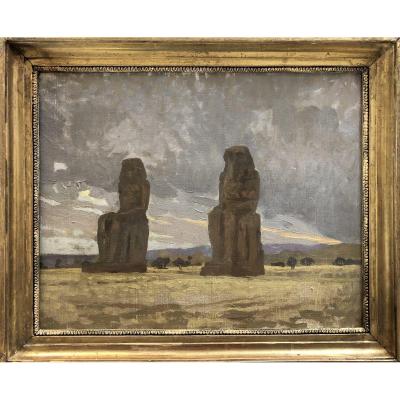

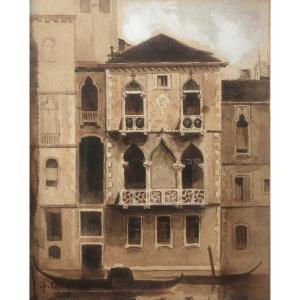

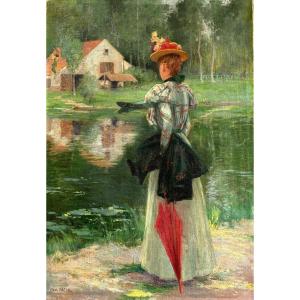
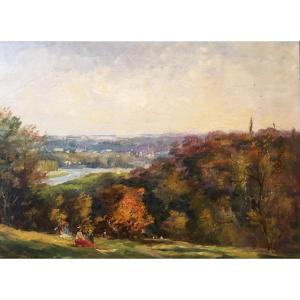
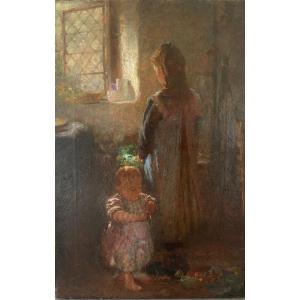

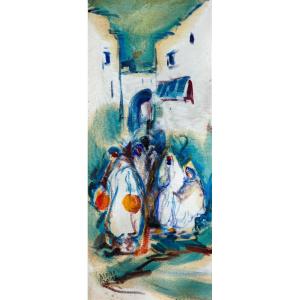
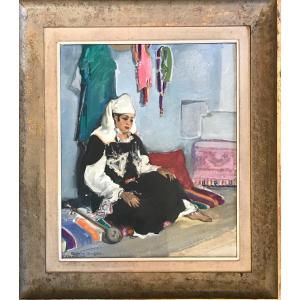
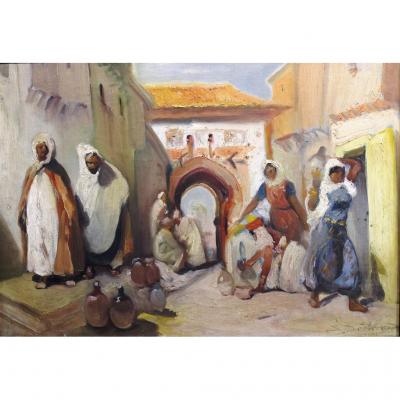
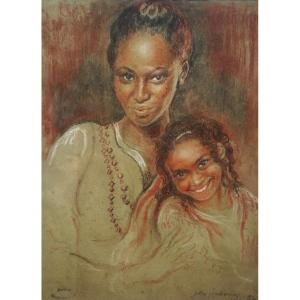
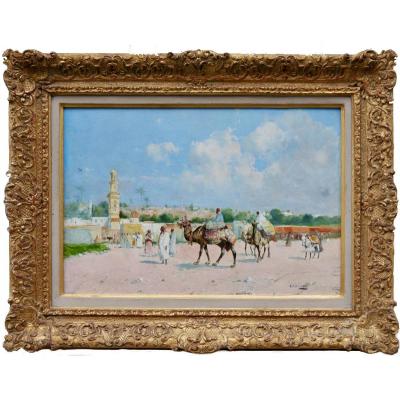




 Le Magazine
Le Magazine Rivista Artiquariato
Rivista Artiquariato TRÉSORS magazine
TRÉSORS magazine




